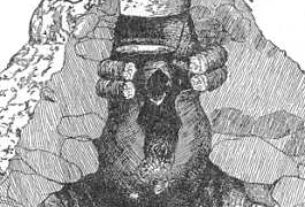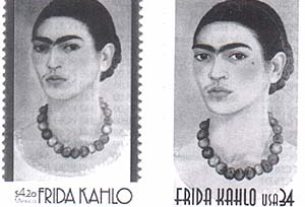Few movements have ever started out less auspiciously than Francisco Madero’s rebellion against Porfirio Diaz, the man who had held Mexico in an iron grip for 35 years. The maderista movement’s unpromising start had a great deal to do with the background and personality of its founder. Where revolutionary leaders are usually disaffected middle-class intellectuals like Lenin and Robespierre or oppressed peasant farmers-turned-bandit like Pancho Villa, Madero came from one of Mexico’s richest families.
Despite — or perhaps because of — his privileged background, Madero was a youthful Rodney Dangerfield who inspired little respect among his contemporaries or even among members of his own family. A teetotaler, vegetarian and spiritualist in a society that revered the hard-drinking, meat-devouring macho, Madero’s protests against Diaz’s 1910 decision to prolong his reign and run for another six-year term were initially greeted with scorn and amusement by the old dictator. Referring to the five-foot-three Madero as el loquito (“the little madman”), he declared that he didn’t know whether a jail or a lunatic asylum would be a better place for him.
Finally wearying of the man he regarded as a pesky little eccentric, Diaz jailed Madero in June, 1910. His family got him out on bail and in October Diaz was declared to have won the presidency in an obviously rigged election. By this time Madero had taken refuge in the United States, from where he planned to return to Mexico at the head of an armed revolution. This was the movement launched on November 20, which Mexico annually celebrates as Revolution Day.
But the first armed clash of the maderista revolution took place two days before Madero crossed into Mexico. Its central figure was a balding 34-year-old merchant named Aquiles Serdán. Born in Puebla in 1876, Serdán was a leading activist in the so-called Anti-Reelectionist movement. In 1908 Madero had published a book called La sucesión presidencial en 1910. Mild in tone, it simply called for honest elections — a proposal about as controversial as coming out against the man-eating shark. The book didn’t even advocate the replacement of Diaz but only of Ramón Corral, his choice for vice-president. (Unpopular and despised, Corral was deliberately selected as a horrible alternative — a move that would discourage sentiment in favor of removing Diaz.) But Madero’s book turned out to be a match in a powder factory. Tired of 35 years of “díazpotismo,” reformers all over Mexico began forming Anti-Reelectionist clubs and urging an end to the dictator’s long reign.
None of these activists was more zealous than Aquiles Serdán. Joining the movement in 1909, he became an indefatigable propagandist for Madero’s cause. Equally dedicated to maderismo was Serdán’s sister Carmen. To throw Diaz’s security organs off the track, Carmen used the male pseudonym of Marcos Serrato while distributing anti-government pamphlets.
In the course of planning the revolution, Serdán worked with Emiliano Zapata as well as with Madero. One of Serdán’s followers was a medical student and fellow Puebla native named Juan Andrew Almazán. Almazán served as liaison between Serdán and Zapata. In April 1911, four months after Serdán’s death, Almazán proclaimed Zapata chief of the maderista movement in Morelos. (Zapata later fell out with Madero over land reform.) Almazán, Serdán’s follower and protégé, would run for president of Mexico in 1940 and lose to Manuel Avila Camacho in what many believed was a fraudulent election.
As for Serdán himself, he traveled to San Antonio, Texas, on the eve of the revolution to confer with Madero. The two men agreed that Serdán should return to Puebla and stockpile arms and ammunition in his house in preparation for the armed struggle. There were, within the Serdán family, some intriguing twists in gender identity. Where Carmen Serdán had used a male pseudonym as she distributed revolutionary literature, Aquiles disguised himself as a grieving widow as he made his way back to Puebla from the San Antonio meeting with Madero.
This was the prelude to one of the most unequal yet heroic armed engagements since 300 Greeks held off a huge Persian army before finally succumbing at Thermopylae. The Serdán family had converted their house at 4 Santa Clara Street into an arsenal. On November 18, Puebla police chief Miguel Cabrera received a tip that arms were being stockpiled in a house occupied by a family of maderista sympathizers. Organizing a force of 400 soldiers and one hundred police, Cabrera led a raid on the offending premises. The defenders numbered six — Serdán, his wife, his mother, his sister Carmen, his brother Máximo and a family friend, a young student named Jesús Nieto.
Despite daunting odds, the occupants of the house refused to surrender. In the course of the shootout, Carmen was wounded when she went up to a balcony to harangue the crowds who were watching the unequal contest. When it was over, Serdán, Máximo and Jesús Nieto were killed while the three women were taken prisoner. With reckless heroism, Serdán was slain after attempting to set up a last redoubt by barricading himself in the basement.
Carmen survived her wounds and was released from prison following Madero’s victory over Diaz. Then came General Huerta’s counterrevolutionary putsch and the overthrow and murder of Madero. In the Villa-Carranza-Obregón campaign against Huerta, Carmen served in field hospitals as a nurse. Then she returned to Puebla to raise the children of her two slain brothers. She died in 1948.
In 1960, to mark the 50th anniversary of Madero’s rising, the Serdán house at 4 Santa Clara was converted into a Regional Museum of the Mexican Revolution. As for the street itself, it was renamed 18th of November to commemorate the heroic deeds of Aquiles Serdán and his family.


